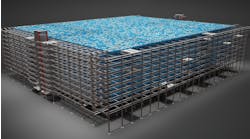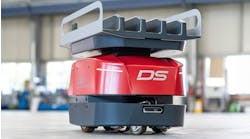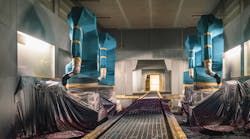Amazing things can happen when organizations find ways to embrace strategic collaboration. Case in point? The relationship between New York, NY-based Fero Labs and commercial truck manufacturer Volvo Trucks headquartered in Gothenburg, Sweden.
The two met when both were participating in a digitization workshop in Germany. At the time, Volvo was searching for startups to collaborate with, and Fero quickly captured its attention. Why? Fero has a unique offering designed to provide manufacturing engineers (not data scientists) with access to advanced machine learning tools capable of creating explainable machine learning models to improve processes.
Soon after the two put together a pilot project investigating paint application quality at a Volvo plant in Sweden. Fortunately, the pilot delivered good solid results early on. Specifically, the model identified dozens of very complex parameters that affected the corrosion the most. "The goal was to somehow find the parameters with the most impact on our process with a specific focus on the thickness of the layer we are putting on the truck body to avoid corrosion," says Josef Stenman, global director of vehicle assembly, cab technology and manufacturing technologies at Volvo Trucks.
Fero uses what it calls explainable or “white box” models, designed to enable engineers and plant personnel to understand why the AI/ML models are making the decisions they're making. "Most of the black box ML/AI systems don't actually provide this information, which ultimately results in fewer improvements in the industrial sector and lower ROI," says Berk Birand, co-founder and CEO of Fero Labs. "Our premise is that companies like Volvo want to own with the knowledge transfer to build these kinds of models, all across the organization from the engineers and operators to the executive level."
"It's a very complicated process to understand how corrosion happens on truck bodies, and therefore, being able to minimize it increases the truck's lifetime. The exciting thing was the engineers already knew some of the insights and they appreciated the ability to verify beliefs by looking at the explainability of the model," says Birand. "It also showed that we were indeed learning the right things. They were also able to glean new information hidden inside their data set to understand the new parameters to help guide decision making in determining necessary process changes."
Exploring new opportunities
The successful collaboration in Sweden recently opened the door to a new engagement at Volvo's Dublin, Virginia plant focusing on a similar use case, but touching more on the emissions and the waste angle. The Fero offering is actively deployed and looking at optimizing the tradeoff between increasing the throughput of the plants, optimizing the quality of the product of the vehicles being painted, as well as minimizing emissions and paint waste.
A core pillar for Volvo group is to reduce its impact on its environment, explains Stenman. "We wanted to reduce paint consumption in order to reduce the impact on the environment," he says. "There is a huge diversity in our product, which means that from one truck cab to the next, you might need to apply more or less paint. The learning ability of the software enables us to determine the exact amount of paint we need to distribute for a specific type of cab."
"Manufacturing is quite complex with so many different parameters, meaning companies always have to find a balance between cost and production volume as well as quality and emissions," says Birand. "It's really hard to essentially navigate that territory. We provided the engineers at the Virginia plant with a tool to ask for help achieving the desired optimization, especially around minimizing the emissions and paint waste."
Serving the commercial market means being able to offer customers 1000s of colors, which provides great optionality, but also puts a massive strain on production. “There's a lot of decision making that comes into play in understanding how to most efficiently switch colors, including figuring out how much paint to load into painting robots so that there's as little waste as possible," says Birand. "That's really important because wasted paint because of a miscalculation is very costly. It also has an environmental by causing greenhouse gas emissions. We want to minimize it as much as possible. At the same time, loading too little paint in the robots means you cannot complete the jobs and that's really costly. It's about balance and allowing the system to make that decision as efficiently and accurately as possible."
The exciting part of the Virginia plant project has been the deployment process, especially during a time when the idea of AI/ML results in high expectations. “The first step was to get rid of the hype and the buzz to really focus on where the value is, and the goal for a company to use emerging technologies to ultimately drive sustainability, profits, and KPI improvements," says Birand. "Best practices point to being very aware of where these improvements would come from, and what are we exactly aiming to achieve in order to see the needle move based on the application of machine learning. This has been very clear in both instances."
Road ahead
A company like Volvo has hundreds, if not thousands, of areas where machine learning could be applicable, explains Birand. “Our aim is to build a software-driven tool that can empower engineers and operators to deploy machine learning models and use them in production.”
Stenman tells IndustryWeek the advantage Volvo saw in Fero was the flexibility—something the company plans to continue leveraging. "It's did not require any kind of high-level specialists to do the job, we could utilize the resources in engineering line to work with this tool," Stenman says. "We have the ability to actually use this same tool to tackle different subjects, moving from one area to another to tackle challenges we have in our manufacturing process."
Of course, the quality of the data fed into this system is crucial. "Going through the pilot process was an opportunity for us to understand how to best organize the data we enter into the system and ensure its value for this kind of work," he says.












